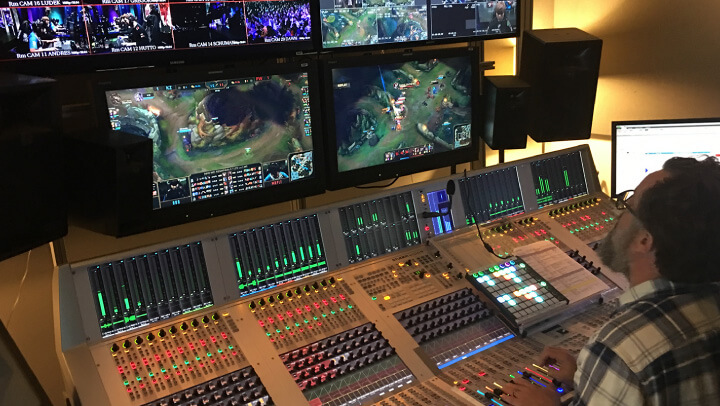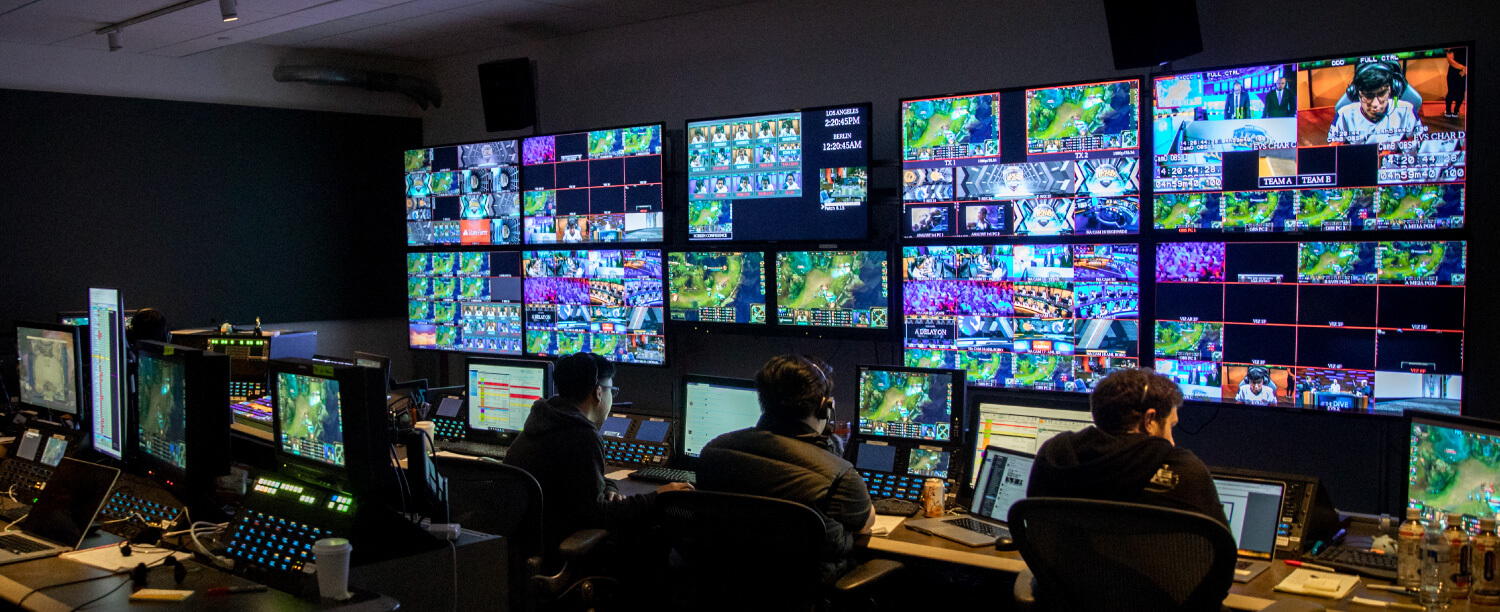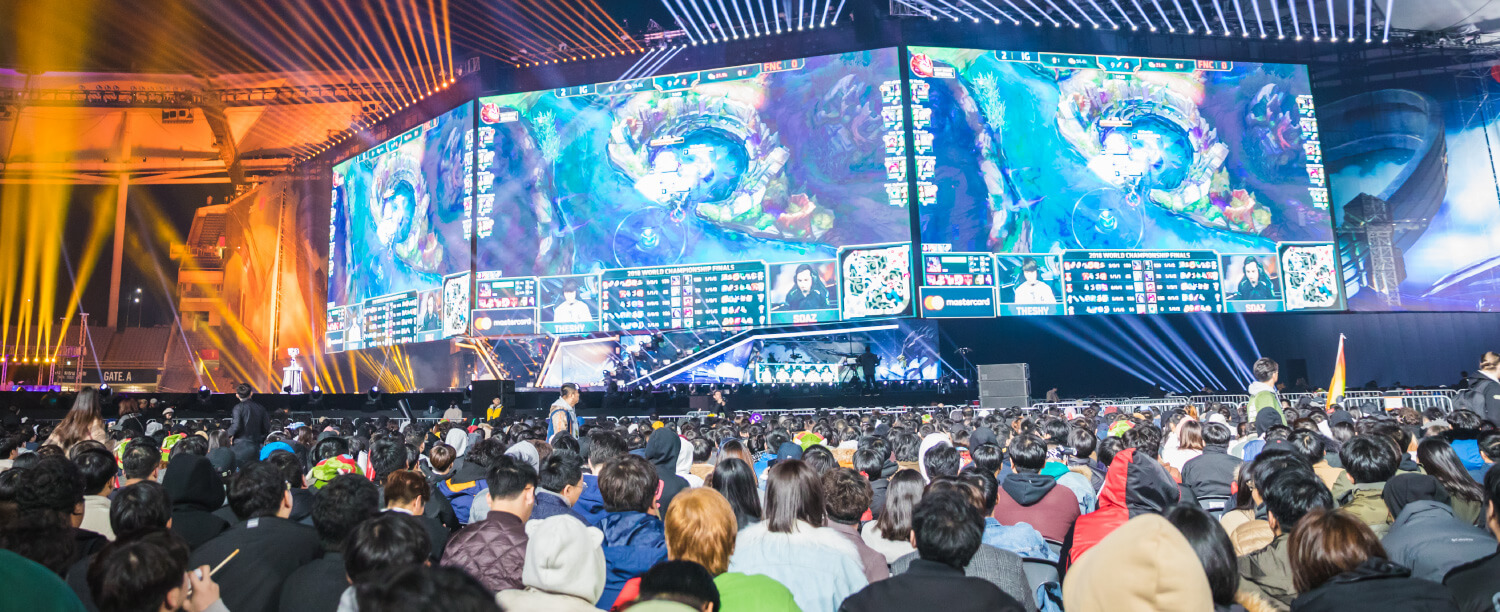Riot Games Solves Remote Production Contribution over IP for League of Legends Invitational Broadcast
Riot Games was founded in 2006 by Brandon Beck and Marc Merrill with the intent to change the way video games are made and supported for players. In 2009, Riot released its debut title League of Legends to worldwide acclaim. The game has since gone on to become the most played PC game in the world and a key driver of the explosive growth of esports. Players are the foundation of our community and it’s for them we continue to evolve and improve the League of Legends experience. Riot Games is headquartered in Los Angeles, CA and has 23 offices worldwide.
Mitch Rosenthal
Senior Manager of Broadcast Operations,
Riot Games


Released in 2009 by Riot Games, League of Legends is the world’s most popular multiplayer online game. As the global community of League of Legends players continues to grow, so too has the viewership of Riot Games’ live event coverage. In supporting its ongoing success and growth, Riot Games needed a way to streamline international productions while delivering an experience on par with major sporting events.
As they prepared for the 2018 Mid-Season Invitational (MSI) in Paris, Riot Games looked for ways to address the challenges of executing an international event while continuing to deliver high quality content to its rapidly growing viewership. The 2018 MSI involved multiple teams over three six-hour stretches of competition which needed to be broadcast to esports fans via Twitch, YouTube, and other video services. To centrally manage live production from Los Angeles, Riot Games implemented a REMI remote production model or at-home type workflows. This approach, used by leading sports broadcasters, aims to ensure high production quality by maintaining directors, broadcast engineers, motion graphic designers, and audio technicians at their main broadcast center rather than deploying production staff on the ground.
For the Paris tournament, Riot Games needed to aggregate live video feeds from up to 34 different simultaneous players with as little latency as possible. These feeds had to be streamed to their Los Angeles broadcast center – a distance of about 6,000 miles or 10,000 kilometers – in 1080p60 resolution. In supporting its REMI workflow, Riot Games wanted to leverage their global wide area network (WAN) and local point of presence (PoP) servers, originally designed to ensure speedy gameplay, for live broadcast contribution and backhaul. By utilizing their own IP network, Riot Games wanted to reduce total bandwidth usage for their video contribution streams from 10 to 1 Gbps.
As quality remained a top priority, the live production team also needed to ensure that audio and video streams were kept in sync within a single frame no matter which PoP servers were used. In order to meet this and all the other challenges, Riot Games needed a solution that could capture all the live gaming action, on and off screen, without compromising on video quality and latency.

As they looked to support the rapid growth of their international productions, Riot Games reached out to broadcast equipment vendors in search of a good solution. Most of the vendors offered video products based on traditional workflows and were not able to provide the flexibility that Riot Games needed to leverage their global IP network for live contribution. Fortunately, Haivision was able to demonstrate that their technology and expertise in streaming low latency video over all types of networks was able to deliver the level of reliability and flexibility that Riot Games was aiming for.
Haivision went beyond its role as a technology vendor and became a strategic partner of the Riot Games engineering team. Working closely together, Haivision delivered a solution that met all of Riot Games’ requirements including scalability for future growth and cost-efficient video streaming over IP. Technical challenges were immediately addressed through ongoing feedback and updates to ensure the success of Riot Games live broadcasts.
Using Haivision’s Makito X encoders and decoders, Riot Games was able to build a REMI workflow supporting ingest of high-quality live streams from over their cost-efficient IP network. Both audio and video content, from 34 League of Legends players and cameras, were streamed from Paris to Riot Games’ Los Angeles broadcast center with under 500ms of latency.
Using Haivision’s Stream Sync technology, Riot Games was able to keep all the incoming video streams synchronized as they were decoded in Los Angeles for immediate ingest into live production workflows. Stream Sync, supported by Makito X encoders and decoders, embeds time codes from encoders and decoders in order to keep all streams, even when sent over different and unpredictable IP paths, in sync within 1 frame accuracy.
Riot Games experienced many benefits as a result of the new workflow, including increased flexibility from not needing to deploy OB vans and satellite uplinks. From the live production team’s standpoint in Los Angeles, the quality and latency of the IP streams met all the criteria of the original workflow.
Additionally, streaming video from 24 cameras in Paris at under 1 Gbps in total over their own PoP servers and WAN proved to be much more efficient than their previous 10 Gbps dedicated connection. The low-latency achieved over this setup is allowing Riot Games to focus on enhancing the end-viewer experience to all their video streaming and broadcast outlets.
Viewed by over 60 million fans worldwide, the 2018 MSI Finals proved the reliability and efficiency of the Haivision solution for the Riot Games REMI over IP workflow. Achieving this successful broadcast while significantly reducing operational costs is allowing Riot Games to continually innovate and deliver great experiences to their rapidly growing fan base.